Kerala Style Mussels Fry (Kallumakkaya Varattiyathu) is a spicy dry roast from Malabar, the northern part of Kerala. Also called Kadukka Fry, it’s a must-try dish made in many homes across the region. In Malayalam, Varattiyathu means “to sauté until dry.”
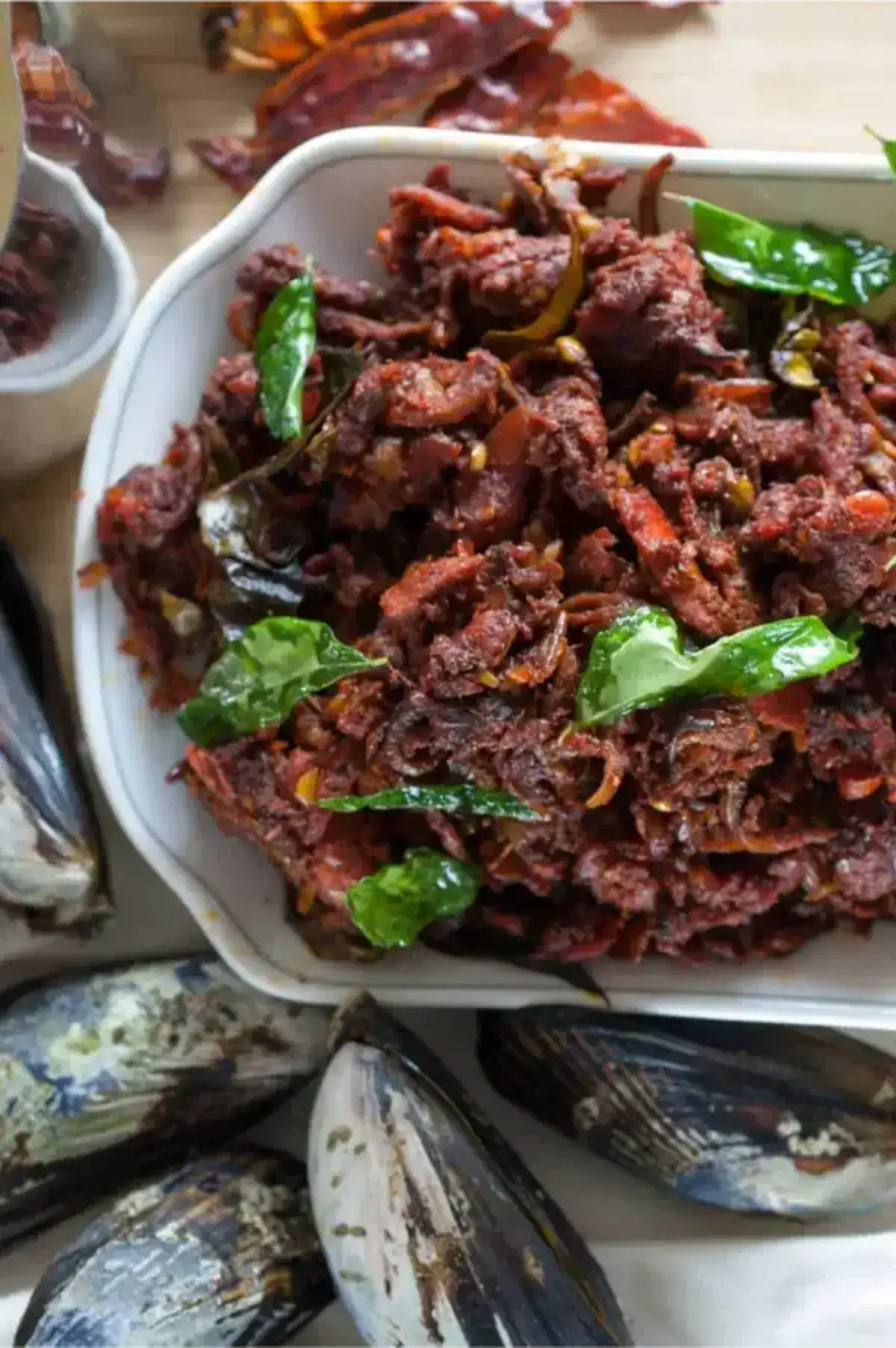
Cleaned and boiled mussels are roasted with Kerala-style masala until the moisture evaporates. The taste becomes bold, intense, and slightly smoky. You’ll find simple steps, useful tips, variations, and storage ideas below to make this classic dish at home.
Jump to:
- What is Kerala Style Mussels Fry?
- Why You'll Love This Recipe?
- Recipe Ingredients
- Variations to Try
- How to Make Kerala Style Mussels Fry? (Step-by-Step Guide)
- Tips And Tricks
- Serving Suggestions
- Storage Instructions
- Frequently Asked Questions (FAQ)
- More Kerala Style Seafood Recipes To Try
- Kerala Style Mussels Fry (Kallumakkaya Varattiyathu)
What is Kerala Style Mussels Fry?
Kerala-style mussels fry is a dry-roasted kallumakkaya dish from Malabar made with a Kerala masala base. It is prepared by cleaning and boiling the mussels, then roasting them with the masala until all moisture evaporates. This gives the dish a bold, intense, and rich flavor.
To make this dish, the mussels are first cleaned well. They are soaked, scrubbed, and boiled just until the shells open. The meat is removed from the shells and set aside.
The masala is prepared using shallots, ginger, garlic, curry leaves, and a Kerala-style spice mix. It is sautéed in coconut oil until soft and fragrant. Once ready, the cleaned mussels are added and roasted with the masala.
Everything is then slow-roasted on a low to medium flame. Stir gently and cook until the masala turns dry and coats the mussels. Rushing this step can burn the masala or overcook the mussels, which turns the taste bitter.
For a simpler version with fewer ingredients, you can try our Kerala Style Prawns Fry Recipe.
Why You'll Love This Recipe?
This dish is loved for its deep red color from the roasted chilli and spices that coat each mussel. The smell of curry leaves, coconut oil, and toasted masala fills the air. Just one bite pulls you in. The intense roasting makes every piece rich, bold, and hard to stop eating.
Recipe Ingredients
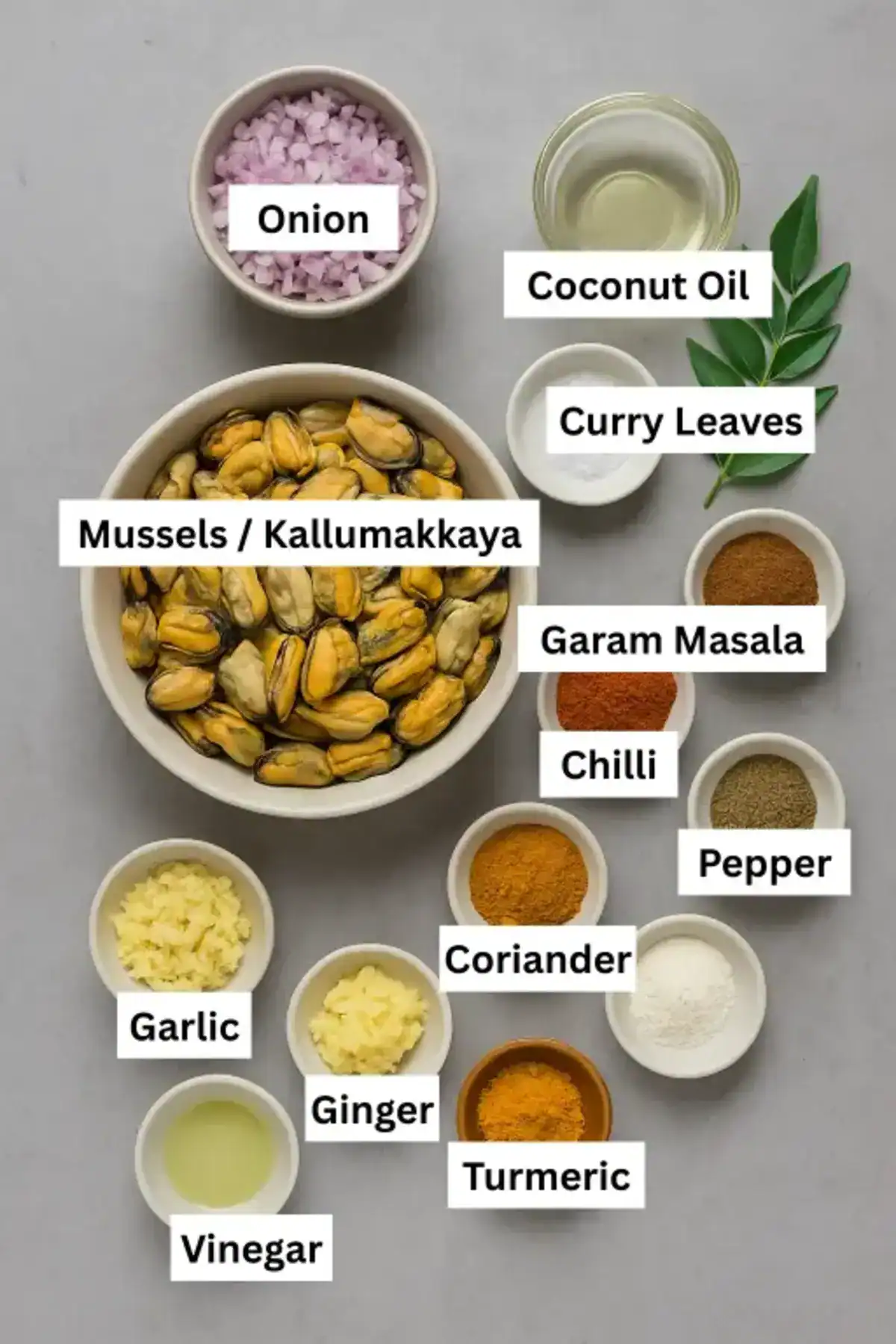
Kallumakkaya or mussels:
There are two types of mussels used in this recipe. The first is the naturally formed kallumakkaya that grows on sea rocks. The name comes from kallu, meaning stone, and kaya, meaning fruit.
This refers to how mussels grow like fruit clinging to rocks. These mussels have a stronger saline flavor. The second type is rope-grown mussels, commonly found in markets. The naturally grown ones are preferred for their richer taste and depth of flavor.
Cleaning is the most important step. Scrub the shells thoroughly to remove dirt and rough particles. Use a knife to scrape off any barnacles and pull out the fibrous beard from each shell. Rinse well before boiling.
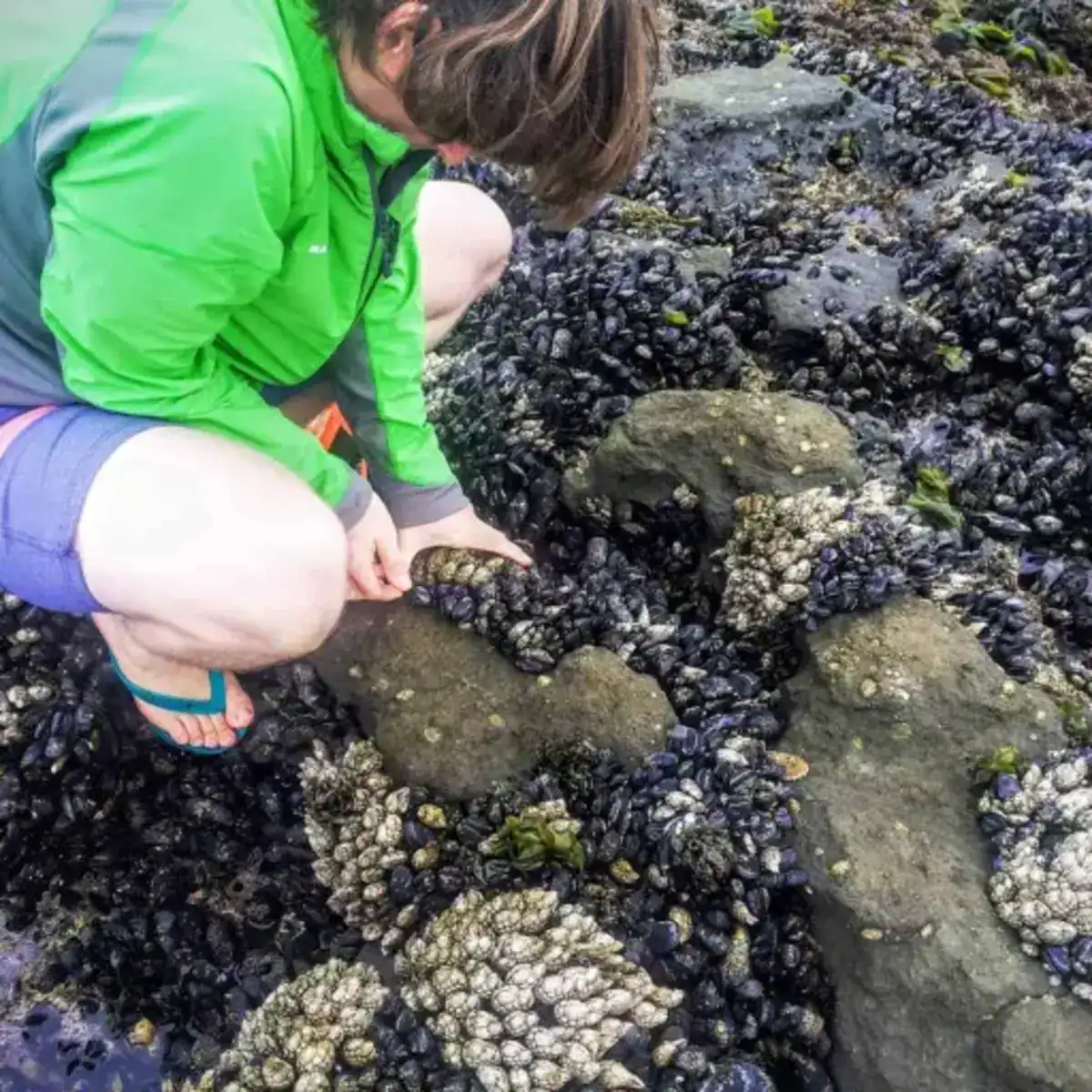
Other ingredients:
Shallots, ginger, garlic, and curry leaves form the base of the masala. Turmeric, chilli powder, black pepper, coriander powder, and garam masala bring heat, depth, and the deep reddish-brown color that coats the mussels.
Everything is roasted in coconut oil for that smoky Kerala flavor. A small amount of vinegar or tamarind can be added for tang, but it's optional.
For the full list of ingredients, exact quantities, and nutritional values, scroll to the recipe card below.
Variations to Try
To make a semi-gravy version, stop roasting halfway and leave some moisture in the masala. This version is used as a filling for kallumakkaya ada (steamed rice cakes).
Adding thenga kothu (chopped coconut bites) gives extra crunch while roasting. The same masala method works with prawns (chemmeen), squid (kanava/koonthal), or clams (elambakka).
Try the same roasting method with our Nadan Beef Fry Recipe. Only the main ingredient changes, the base and slow-roasting style remain the same.
How to Make Kerala Style Mussels Fry? (Step-by-Step Guide)
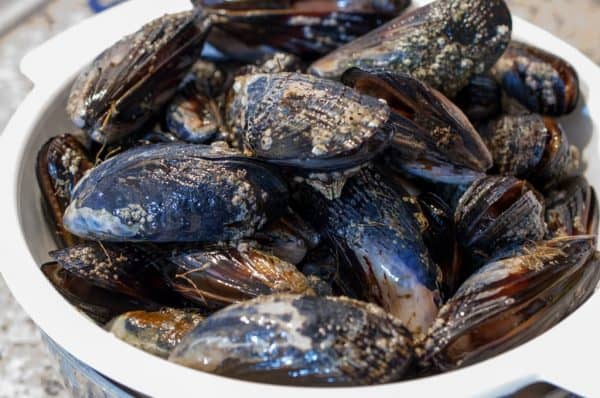
STEP 1: Clean mussels - Place your mussels in a colander or bowl in the sink and run them under cold water. Rinse and scrub as necessary.
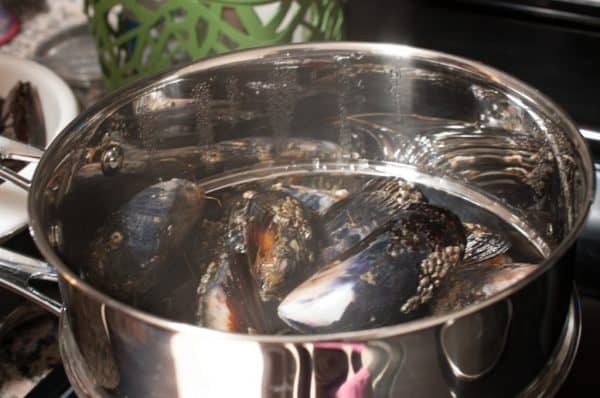
STEP 2: De-shell the mussel - These mussels had quite hard shells and were difficult to open up using hands. I chose this way to deshell them. Place 2 to 3 inch of water in a saucepan with a steamer and bring to a boil. Add the mussels to the steamer and cover. Reduce heat to medium and let it cook for 3 to 4 minutes.

STEP 3: Take it out of the steamer and de-shell. It's easy to open up the shell once it's steamed. Also, remove the dirt out of the mussel. Do it in batches.
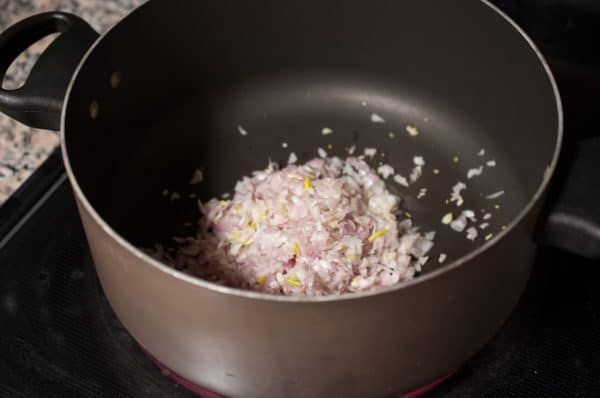
STEP 4: Heat oil in a pan and add finely sliced shallot and curry leaves. Sauté until it becomes golden brown color.
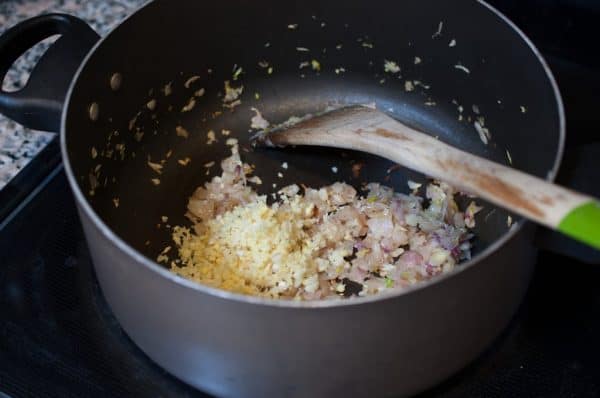
STEP 5: Crush ginger and garlic or make it into a paste. Add ginger-garlic and sauté it well.
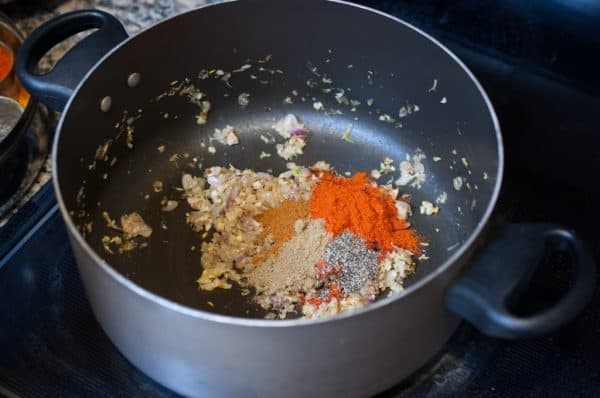
STEP 6: Add turmeric powder, chili powder, coriander powder and garam masala. Sauté it well. Add oil as required to fry the masalas.
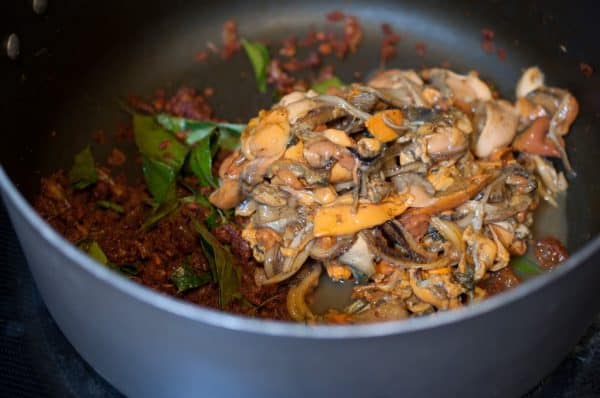
STEP 7: Add cleaned mussels, enough salt, vinegar, and cover and cook. Don't add water. Mussels have water in them, which seeps out while cooking. ** Vinegar is optional. I like slight sourness in the dish and hence added it.
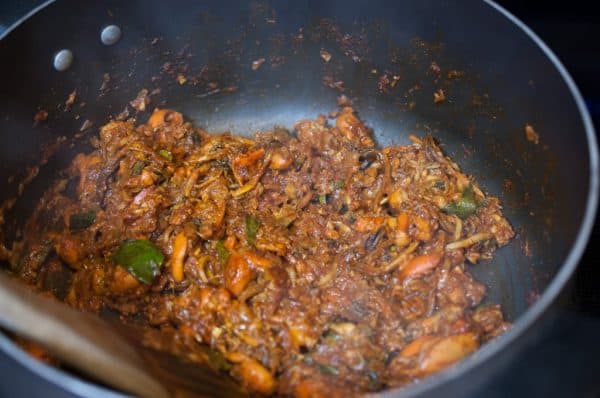
STEP 8:Ideally, it should get cooked by the time the water gets dried up. Add sufficient oil, around 2 tablespoons of oil. Fry it up to the consistency you wish to have.
If you enjoy small fish fries with a crisp finish, try our Easy Natholi Fry Recipe, made with anchovies and a different spice mix.
Tips And Tricks
- Cleaning and roasting are the two stages that need the most care. Unclean mussels may cause stomach issues. Burnt masala makes the dish bitter, and overcooking turns the mussels rubbery.
- Add coconut oil in small amounts while roasting. This prevents sticking and helps the masala roast evenly with a crisp finish.
- If the boiling water from mussels is clean while roasting to boost the natural kallumakkaya flavor.
- To increase sourness, add chopped tomatoes or more tamarind while roasting.
Serving Suggestions
Kallumakkaya varattiyathu is served as a starter with lemon wedges and raw onion slices. It pairs well with rice varieties like basmati, Kerala matta (red rice), or neychoru (ghee rice).
It is also commonly served with porotta, chapati, or thattukada dosa (street-style dosa). Other traditional pairings include appam (lace hoppers), noolputtu (string hoppers), pathiri (rice flatbread), and orotti (thick rice roti).
AAfter roasting, the pan holds leftover masala stuck to the bottom. Some mix hot rice into the same pan and eat it directly from it. That masala adds the most intense flavor.
Storage Instructions
Kerala-style mussel fry stays fresh when fully roasted and dry. All moisture must be evaporated before storing. Keep it in an airtight container and refrigerate for up to 4 or 5 days. For longer storage, freeze it in a sealed freezer-safe container for up to 2 to 3 months.
When reheating, let it come to room temperature first. Then reheat on the stove or in the microwave. Add a small splash of water if needed to loosen the masala and bring back the flavor.
This dry version is also made for loved ones travelling abroad or living overseas. It doesn’t spoil during long travel hours and can be frozen for months. Reheat and eat whenever needed without losing its flavor.
Frequently Asked Questions (FAQ)
Add coconut oil periodically during roasting. This prevents sticking and helps the masala roast evenly.
Yes. Clean the kallumakkaya (mussels) thoroughly and marinate for at least 30 minutes. First, sauté the Kerala-style base masala. Then add the mussels with a small amount of water and cook fully. Once the water dries, start roasting. Add a little coconut oil if needed while roasting. Do not overcook, or the kallumakkaya may turn rubbery.
More Kerala Style Seafood Recipes To Try
I’d love to hear your thoughts if you have tried this! Please leave a ⭐️ rating and a comment below. Don’t forget to share your photos on Instagram and tag @a_little_bit_of_spice.

Kerala Style Mussels Fry (Kallumakkaya Varattiyathu)
Ingredients
- ½ kilogram Mussels / Kallumakkaya / Kadukka(deshelled)
- ½ cup shallot (chopped)
- 1 tablespoon garlic (crushed)
- 1 tablespoon ginger (crushed)
- ½ teaspoon turmeric powder
- 1 ½ tablespoons chilli powder
- ½ teaspoon pepper powder
- 1 teaspoon coriander powder
- 1 teaspoon garam masala
- 1 teaspoon vinegar
- 3 sprigs curry leaves
- Coconut oil / vegetable oil / sunflower oil
Instructions
- Clean mussels - Place your mussels in a colander or bowl in the sink and run them under cold water. Rinse and scrub as necessary.
- De-shell the mussel - These mussels had quite hard shells and were difficult to open up using hands. I chose this way to deshell them. Place 2 to 3 inch of water in a saucepan with a steamer and bring to a boil. Add the mussels to the steamer and cover. Reduce heat to medium and let it cook for 3 to 4 minutes.
- Take it out of the steamer and de-shell. It's easy to open up the shell once it's steamed. Also, remove the dirt out of the mussel. Do it in batches.
- Heat oil in a pan and add finely sliced shallot and curry leaves. Sauté until it becomes golden brown color.
- Crush ginger and garlic or make it into a paste. Add ginger-garlic and sauté it well.
- Add turmeric powder, chili powder, coriander powder and garam masala. Sauté it well. Add oil as required to fry the masalas.
- Add cleaned mussels, enough salt, vinegar and cover and cook. Don't add water. Mussels have water in them, which seeps out while cooking. ** Vinegar is optional. I like slight sourness in the dish and hence added it.
- Ideally, it should get cooked by the time the water dries up. Add sufficient oil, around 2 tbsp. Fry it up to the consistency you wish to have
Notes
- Cleaning and roasting are the two stages that need the most care. Unclean mussels may cause stomach issues. Burnt masala makes the dish bitter, and overcooking turns the mussels rubbery.
- Add coconut oil in small amounts while roasting. This prevents sticking and helps the masala roast evenly with a crisp finish.
- If the boiling water from mussels is clean while roasting to boost the natural kallumakkaya flavor.
- To increase sourness, add chopped tomatoes or more tamarind while roasting.
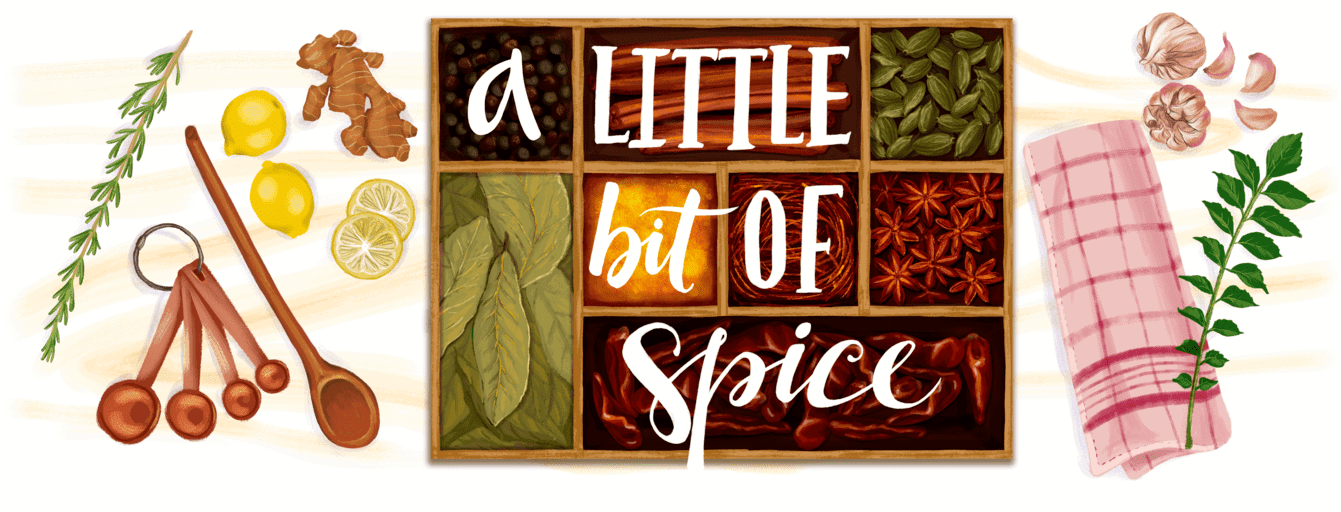





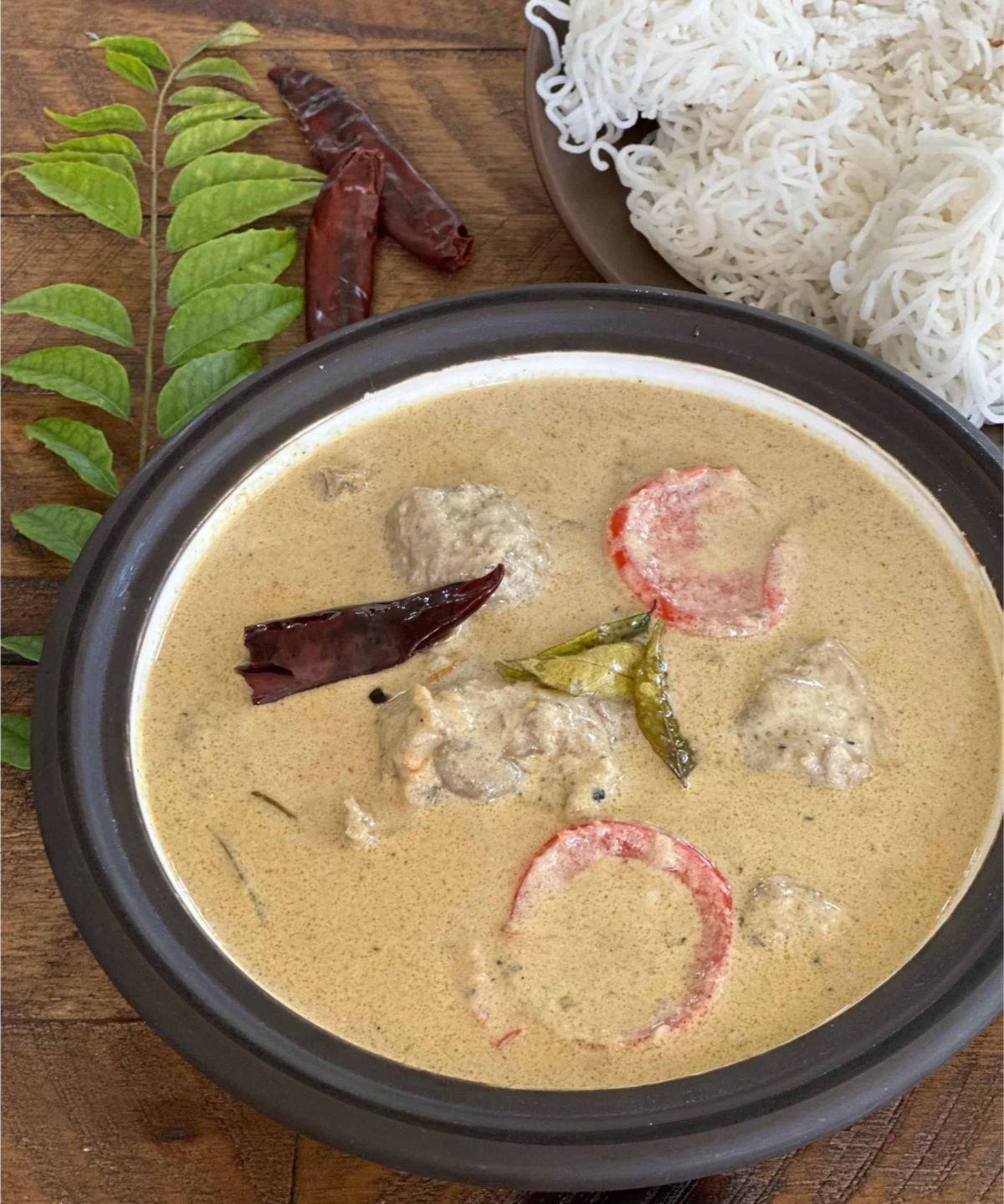
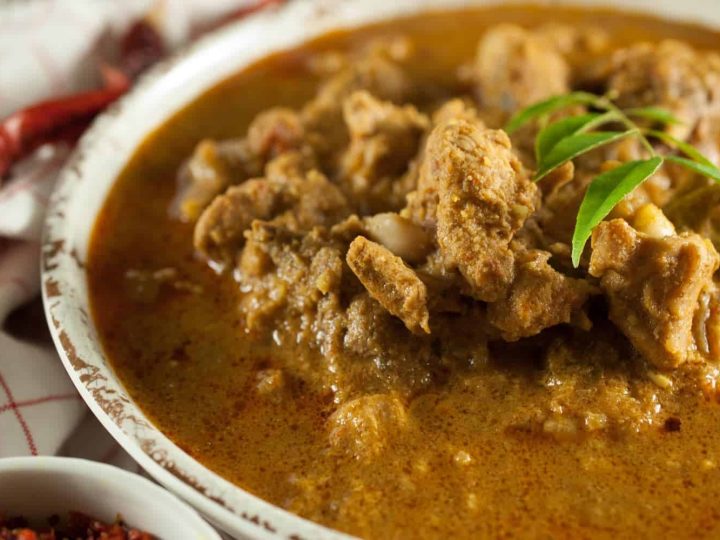


At least now I know what it's called in Kerala! Looks yummy!
Thanks Gita :)
Looks yummy... I cook mussels with potato.... next time will try this recipe...
Looks soooooo yummy! I can imagine how tasty it will be. Thanks for sharing Jane.
Nice pictures too!
Thanks Rini and Sunil :) Try it out and lemme know how it turns out for you.
That note "Tastes best with coconut oil" is so true!
Yes! These spices and the seafood flavours only get enhanced with coconut oil. It's a healthier option too. Jane would agree :)
Totally agree :)
Its excellent...I just lv it...
Thanks Naina!